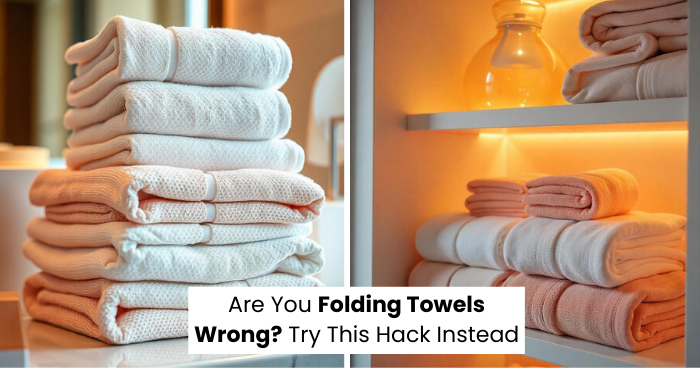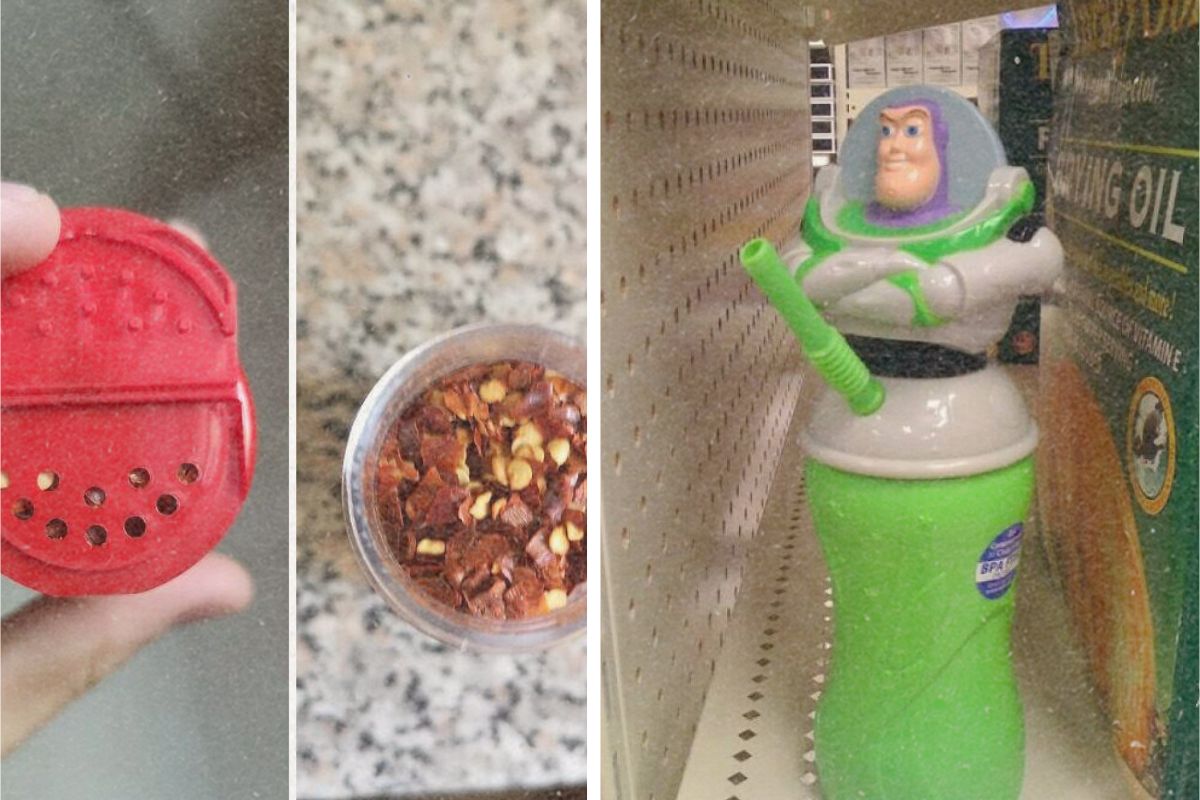How to Unclog a Shower Drain: Effective Methods and Tips
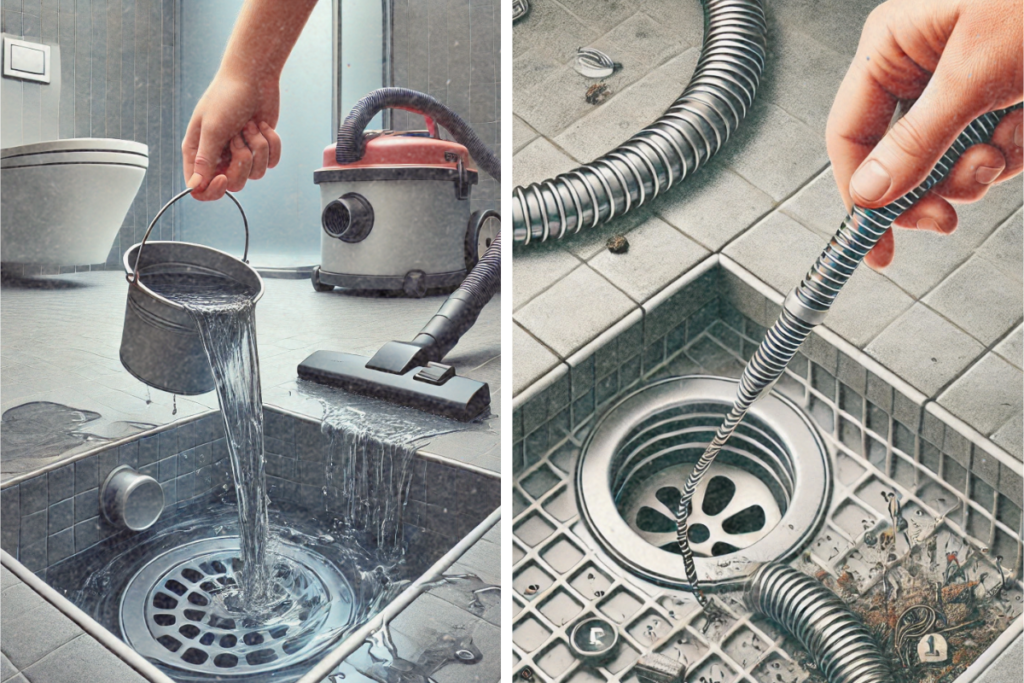
A clogged shower drain is a household problem that can make a hot shower turn into a terrible time. It can be unpleasant to deal with a soapy slow-draining or totally blocked shower, whether the culprit be hair, soap scum or other debris. However, with some tools and proper skills, you can remove clog fairly fast and efficient, and you will not need a plumber for that task. From typical shower drain blockages to best DIY shower drain unblock solutions & knowing when to call the experts, in this guide, we learn how to unplug a shower drain!
Why Do Shower Drains Get Clogged?
Understanding the root cause of your clogged shower drain can help you prevent future blockages. Here are some of the most common culprits:
Advertisement – Continue Reading Below
- Hair: Hair is the leading cause of clogged shower drains. It tangles together and combines with soap residue, creating a dense blockage that’s tough to break down.
- Soap Scum: Soap can leave behind a filmy residue that hardens over time, restricting water flow.
- Mineral Buildup: Hard water can cause mineral deposits to accumulate in pipes, narrowing the drain over time.
- Foreign Objects: Small items like shampoo caps or razor covers can accidentally fall into the drain and cause blockages.
How to Unclog a Shower Drain: Step-by-Step Solutions
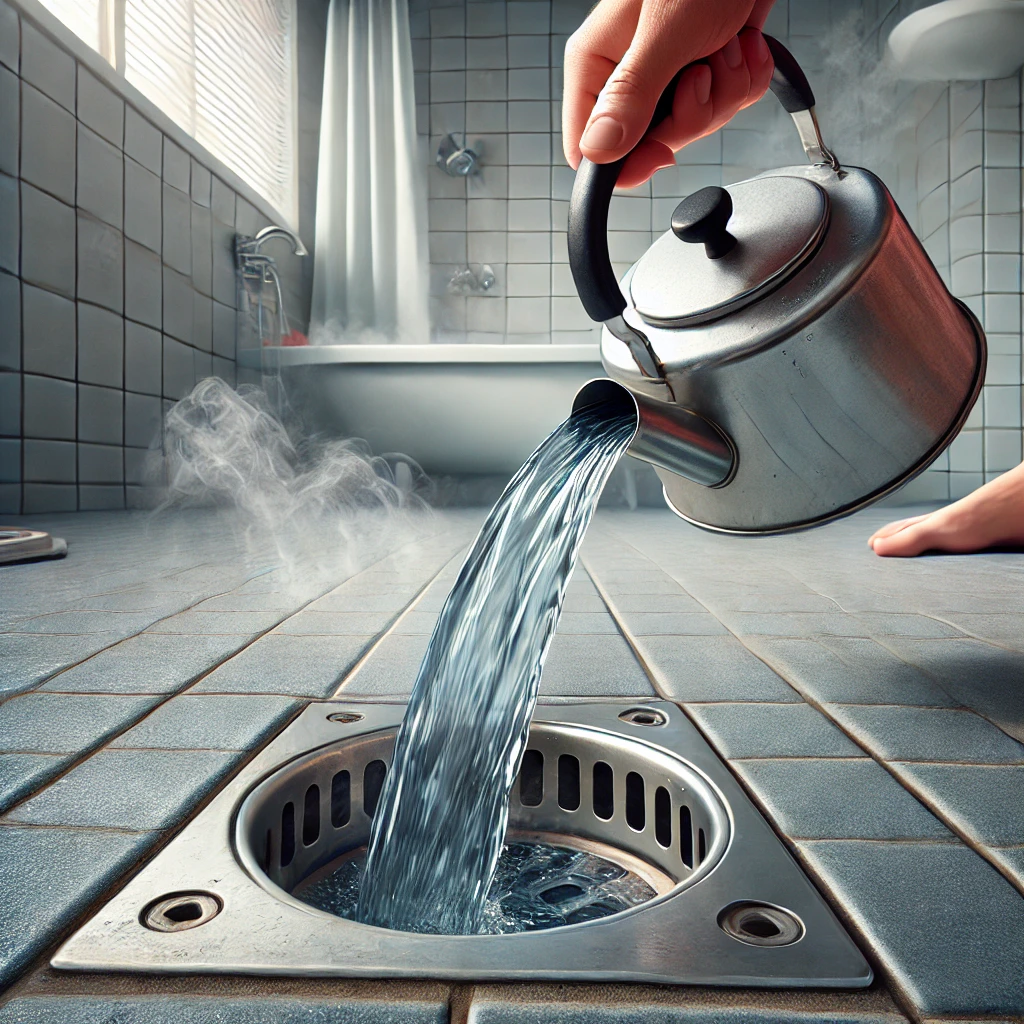
Advertisement – Continue Reading Below
Here are some effective DIY methods to tackle a clogged shower drain.
1. Start with Boiling Water
This is the simplest and cheapest method to try first.
- Boil a kettle of water.
- Slowly pour it down the drain in two or three stages, allowing the hot water to break up any grease or soap scum.
When to use: For minor clogs caused by soap or grease.
Tip: Avoid using boiling water if you have PVC pipes, as the high temperature could damage them.
2. Use a Plunger
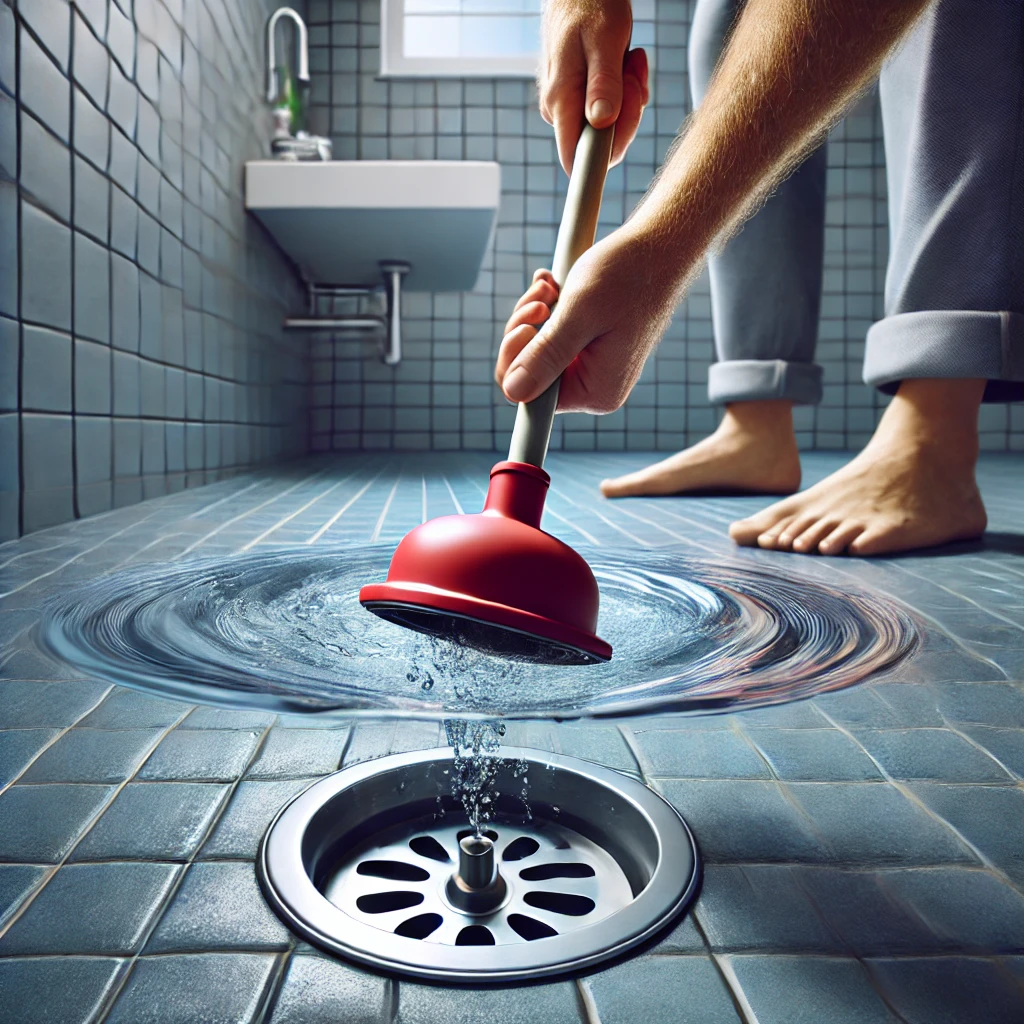
A plunger isn’t just for toilets—it can work wonders on your shower drain too!
- Step 1: Remove the drain cover.
- Step 2: Fill the shower with enough water to cover the plunger’s base.
- Step 3: Place the plunger over the drain and push down firmly, then pull up sharply. Repeat several times.
This creates suction, which can dislodge the clog.
When to use: When the clog isn’t too far down the drain.
3. Try Baking Soda and Vinegar (With Caution)
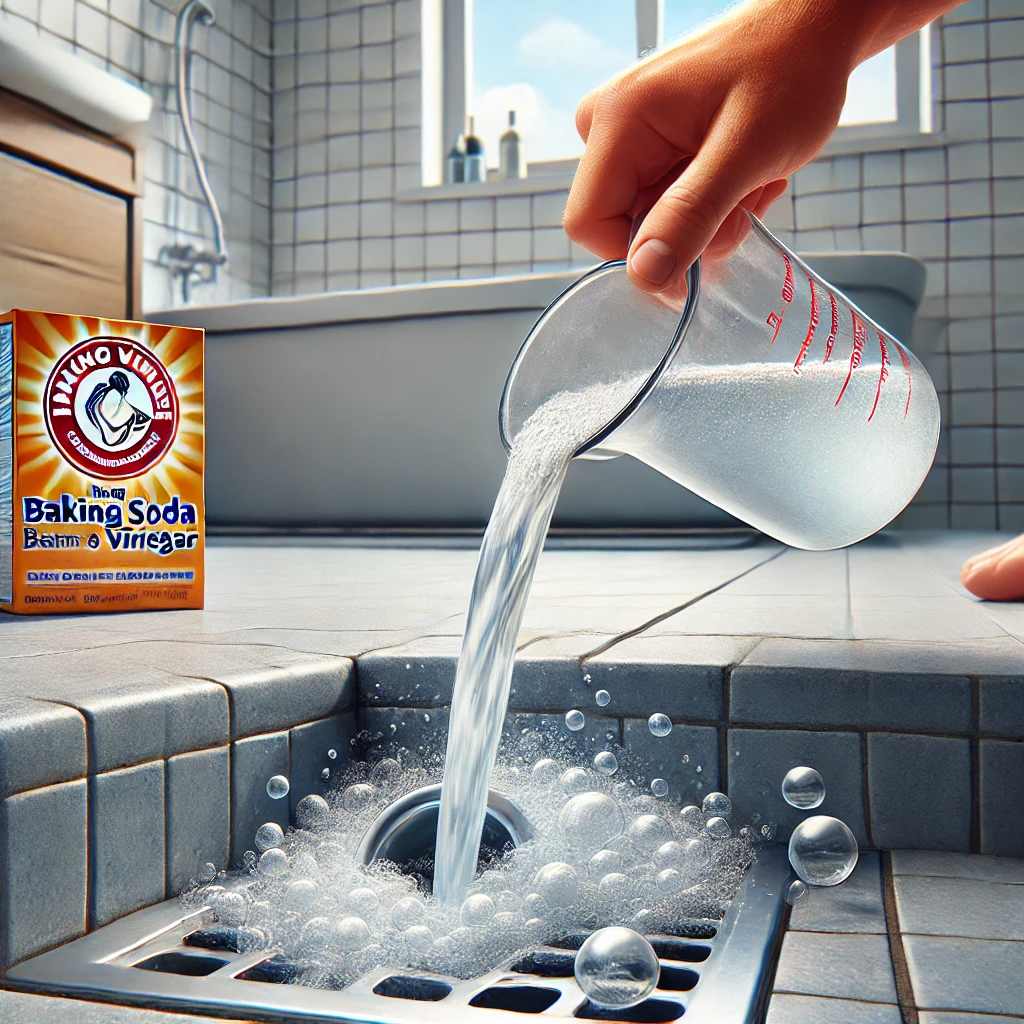
Advertisement – Continue Reading Below
While baking soda and vinegar are popular DIY solutions, they may not always be effective for stubborn clogs. Here’s how to use them:
- Pour ½ cup of baking soda down the drain.
- Follow with ½ cup of white vinegar.
- Let the mixture fizz for 15-20 minutes.
- Flush with hot water.
Warning: Some experts caution against using baking soda and vinegar for severe clogs, as the reaction can sometimes worsen blockages.
4. Use a Drain Snake or Wire Hanger
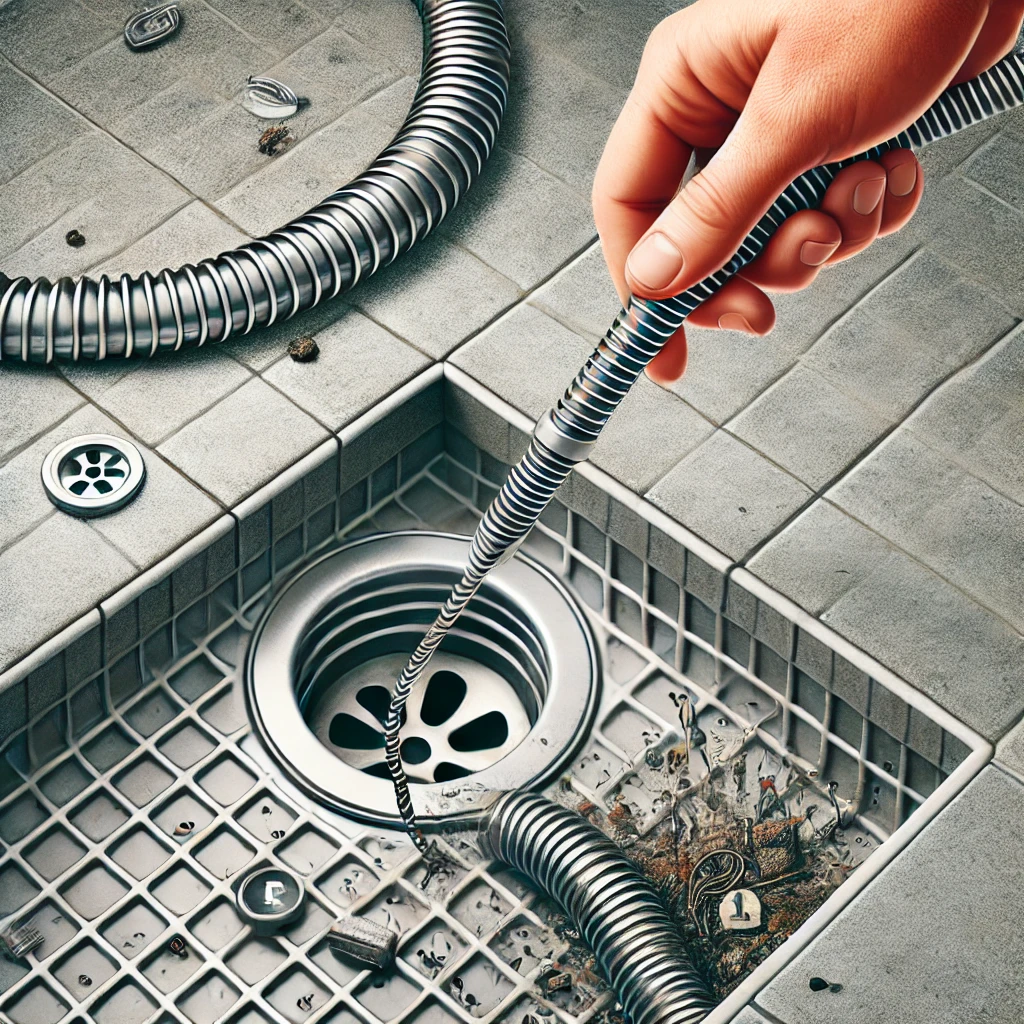
A drain snake (or plumber’s auger) is one of the most effective tools for clearing stubborn clogs. If you don’t have one, a straightened wire hanger with a small hook can work too.
Advertisement – Continue Reading Below
- Insert the snake or hanger into the drain.
- Push it down until you feel resistance.
- Twist and pull it out to remove the clog.
When to use: For clogs caused by hair or foreign objects.
5. Dissolve Hair with Specialized Products
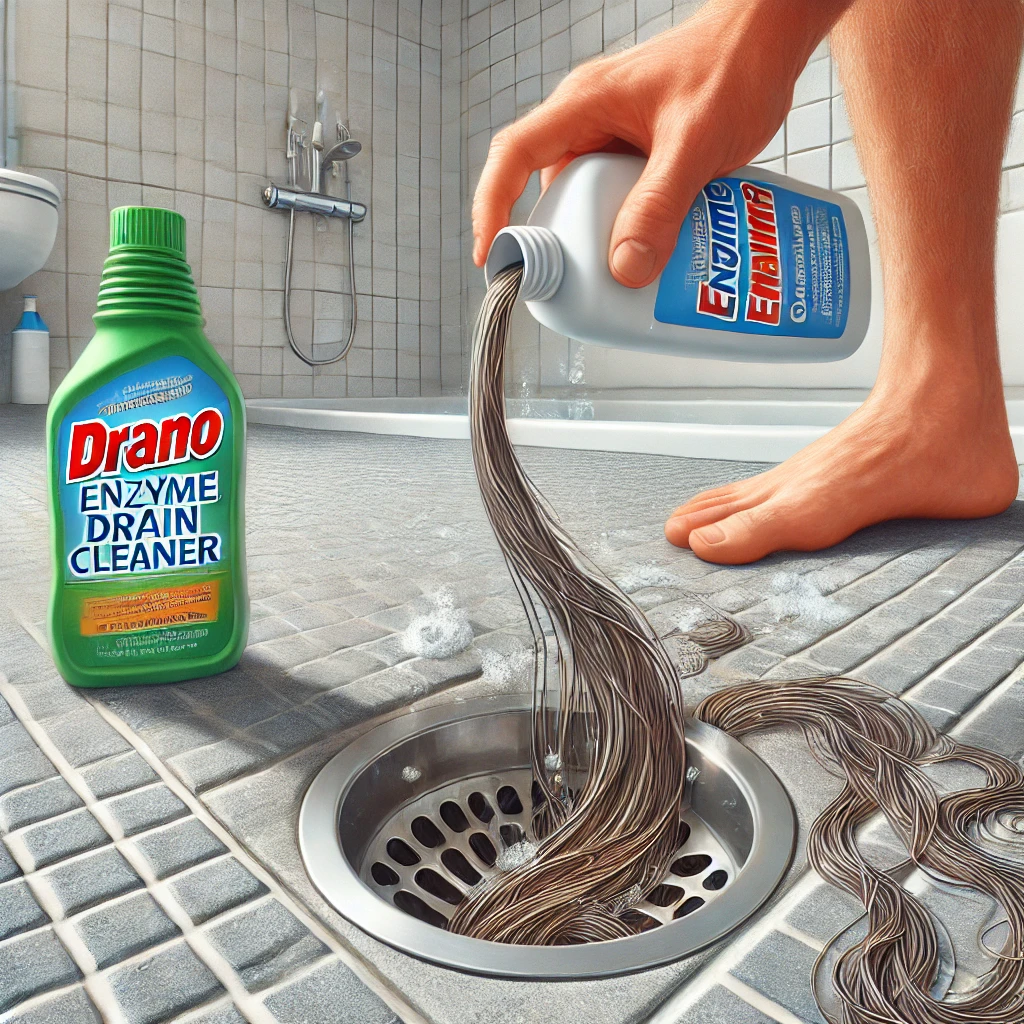
Advertisement – Continue Reading Below
Hair is notoriously difficult to remove, but there are products designed specifically for this purpose.
- Enzyme-based drain cleaners: These use natural enzymes to break down hair and organic matter without damaging pipes.
- Chemical drain cleaners like Drano: These can dissolve hair quickly but should be used sparingly, as frequent use can corrode pipes.
Pro Tip: Always follow the manufacturer’s instructions, and avoid mixing chemicals to prevent toxic fumes.
6. Hydrogen Peroxide or Bleach
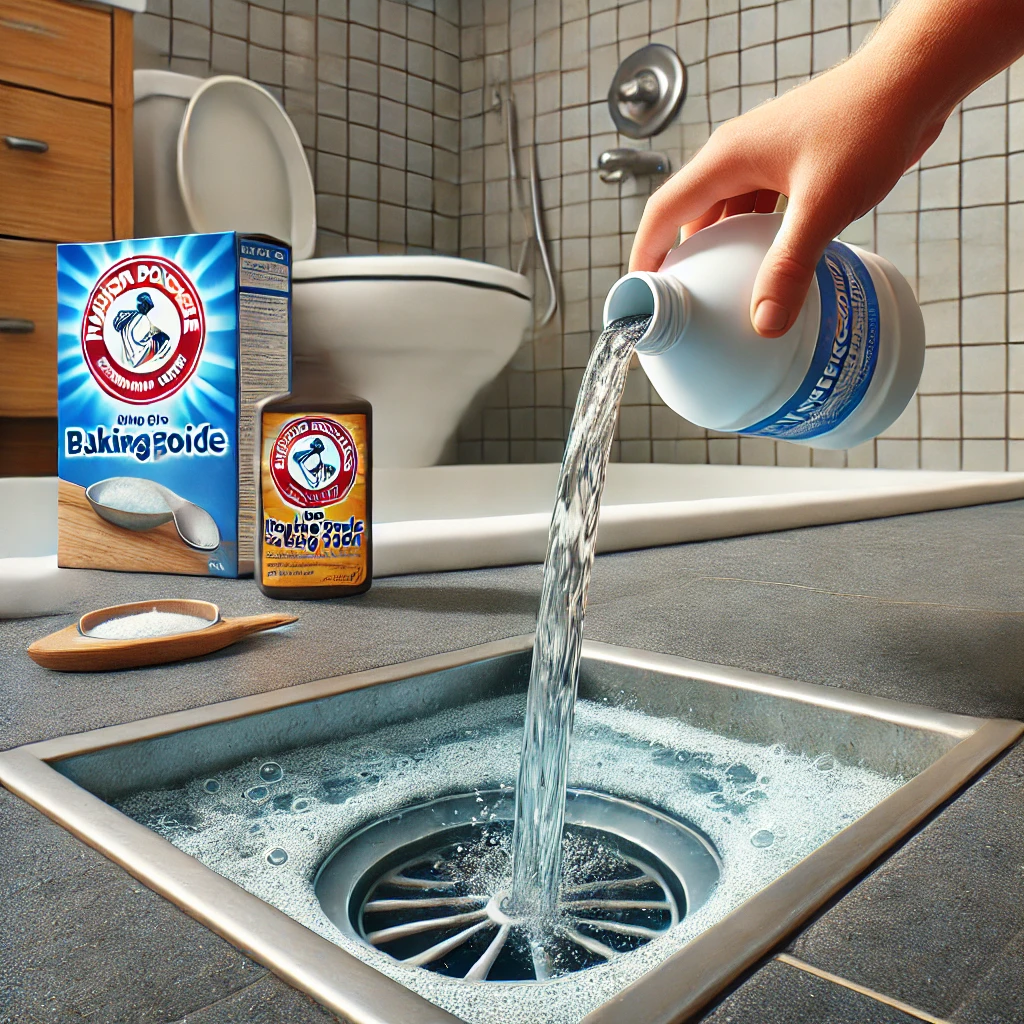
Hydrogen peroxide is a safe and effective alternative to harsh chemical cleaners.
- Mix equal parts hydrogen peroxide and baking soda to create a paste.
- Pour it down the drain and let it sit for 1-2 hours.
- Rinse with hot water.
Bleach can also dissolve organic material, but it should only be used as a last resort and in small quantities.
7. Clear Standing Water
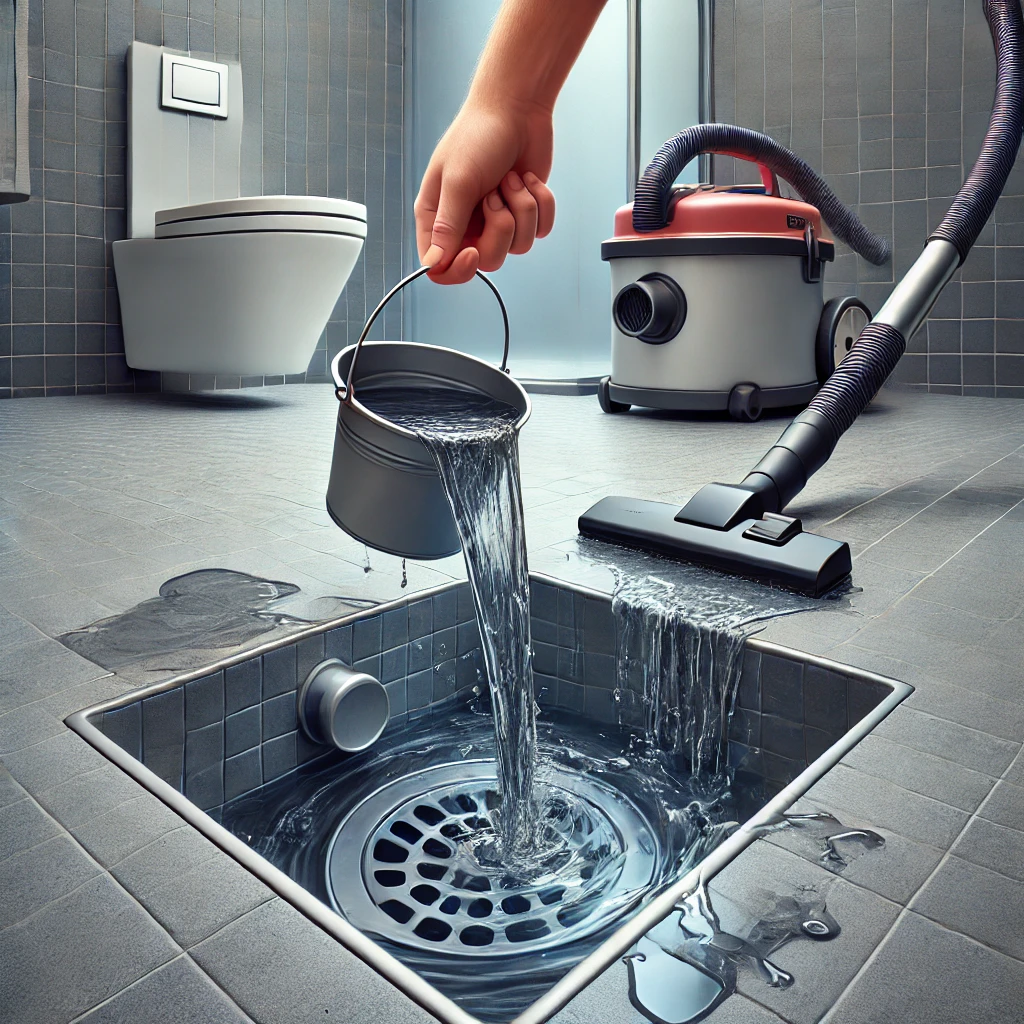
Advertisement – Continue Reading Below
If your shower is completely blocked and water won’t drain, you’ll need to tackle the standing water first.
- Step 1: Use a bucket or cup to scoop out as much water as possible.
- Step 2: Try plunging the drain or using a snake to remove the clog.
What if nothing works? If the clog persists, use a wet/dry vacuum to suction out the debris.
Why Drano and Similar Products Sometimes Fail
Chemical drain cleaners like Drano are effective for many clogs, but they’re not a guaranteed fix. Here’s why:
- They don’t always work on severe clogs or blockages caused by foreign objects.
- Overuse can damage pipes, especially if they’re old or made of PVC.
- They’re ineffective against clogs located deep in the plumbing system.
Preventing Future Clogs
Once you’ve successfully unclogged your shower drain, take these steps to prevent future blockages:
- Install a Drain Cover: A simple mesh or plastic cover can catch hair and debris before it goes down the drain.
- Clean the Drain Regularly: Remove hair and buildup from the drain cover after each shower.
- Flush the Drain Monthly: Pour boiling water or a vinegar solution down the drain to dissolve minor buildups.
- Be Mindful of What Goes Down the Drain: Avoid washing large amounts of soap, dirt, or oil into the drain.
When to Call a Plumber

Sometimes, DIY methods just aren’t enough. Call a professional if:
- The clog persists after trying multiple methods.
- You notice foul odors or gurgling sounds coming from the drain.
- Water backs up into other areas of your home, like sinks or toilets.
FAQs About Unclogging Shower Drains
Q: Can a plunger get hair out of a drain?
A: Yes, a plunger can help loosen and dislodge hair clogs, especially if they’re near the surface.
Q: Will vinegar dissolve hair?
A: Vinegar alone isn’t strong enough to dissolve hair, but when combined with baking soda or a drain snake, it can help clear minor blockages.
Q: What’s the best drain cleaner for standing water?
A: Enzyme-based cleaners are a safe and effective option for breaking down clogs without damaging pipes.
Clever simple ideas: Clog shower drain doesn’t have to be terrifying. Many drains can be unplugged with simple tools and techniques, avoiding the need to call a plumber and shell out hundreds of dollars. And to prevent the issue from happening again, continue to be proactive with your regular drains, drain covers, etc. If worse comes to worst, summon in a professional — it’s better than compromising your plumbing system.
With these tips, you will avoid a clogged drain and will have your shower working seamlessly. Happy unclogging!




